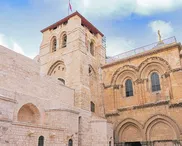My wife and I have just come back from a short city break in Rome. Among all the sites to see, the Colosseum stands out as a stunning testament to ancient engineering and a grisly reminder of ancient cruelty. It is certainly breathtaking.
Taking eight years to build, it opened in 80AD. An estimated 100,000 slaves were recruited for its construction. Covering an area of six acres, the tiered seating could hold as many as 80,000 spectators. With an elaborate underground system of chambers, elevators and trapdoors, the arena could be supplied with gladiators, criminals and exotic animals ready for sport and violent death. So many exotic animals were killed for sport at the site, including giraffe, hyena and tiger, that it is thought the Colosseum contributed to the extinction of some species.
Costing the earth
The Colosseum remains the largest standing amphitheatre in the world and, after nearly 2,000 years of earthquakes and erosion, could put some modern engineering to shame. But it raises an interesting question: how on earth did the Romans manage to pay for all this?








